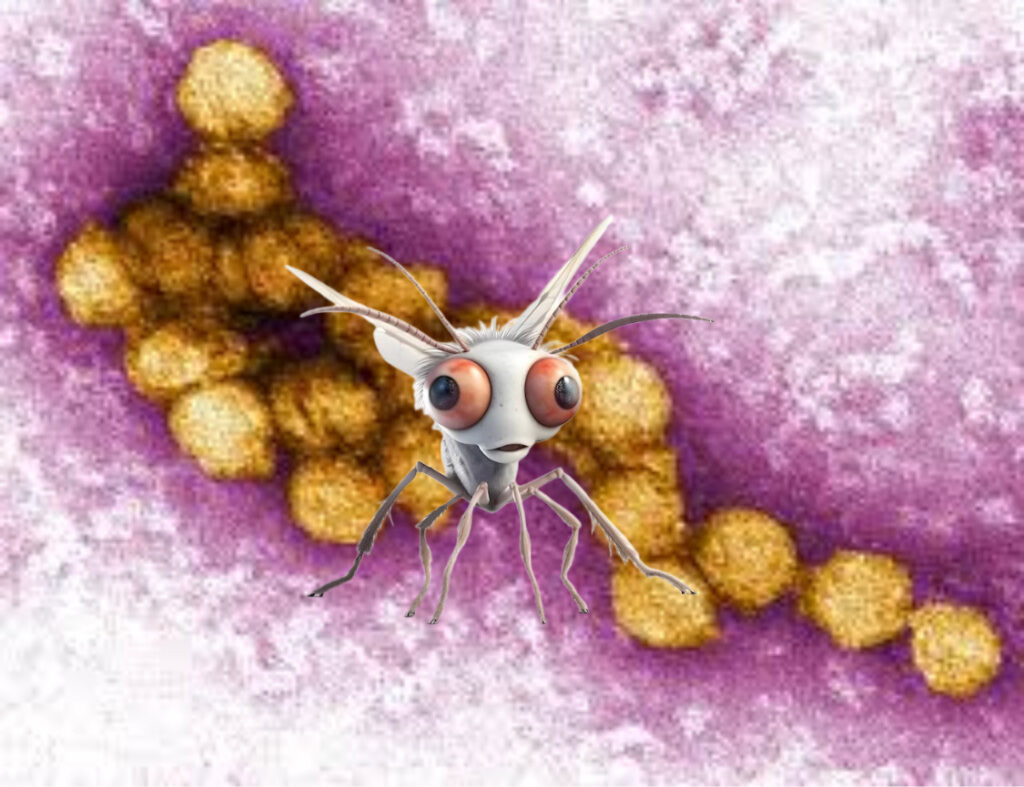
Introduction
West Nile virus (WNV) is a mosquito-borne disease that has garnered significant attention due to its spread across various parts of the world, particularly in North America since its introduction in 1999. This article delves into the nature of the virus, its impact on human health, and the measures taken for its control and prevention.
Origins and Spread
Originally identified in the West Nile district of Uganda in 1937, the West Nile virus remained relatively obscure until it surfaced in New York City in 1999. Since then, it has spread across the United States and into Canada, Mexico, and parts of Central and South America, Europe, Africa, and the Middle East. The virus primarily cycles between birds and mosquitoes, with humans and horses as incidental hosts.
Biology of the Virus
West Nile virus belongs to the Flaviviridae family, which includes other notable pathogens like dengue, yellow fever, and Zika viruses. It’s an RNA virus, meaning its genetic material is RNA rather than DNA. This RNA is encapsulated within a lipid envelope, making it sensitive to detergents and heat, which can be used in its control.
Transmission
The primary mode of transmission is through the bite of an infected mosquito, particularly from the Culex species. However, transmission can also occur through:
- Blood transfusions and organ transplants from infected donors.
- Mother to baby during pregnancy, delivery, or breastfeeding.
- Laboratory exposures.
Symptoms and Clinical Presentation
Most people infected with WNV (about 80%) show no symptoms. For those who do, symptoms can range from mild to severe:
- Mild Symptoms: Fever, headache, body aches, skin rash, and swollen lymph glands. These symptoms can last a few days to several weeks.
- Severe Symptoms: In less than 1% of cases, WNV can cause severe neurological diseases like encephalitis (inflammation of the brain) or meningitis (inflammation of the membranes around the brain and spinal cord). Symptoms include high fever, headache, neck stiffness, stupor, disorientation, coma, tremors, convulsions, muscle weakness, and paralysis.
Diagnosis and Treatment
Diagnosis typically involves serological tests to detect antibodies against the virus or PCR tests to detect viral RNA. There’s no specific treatment for WNV infection. Care is supportive, focusing on hydration, pain management, and, in severe cases, hospitalization for advanced care like intravenous fluids or ventilation.
Prevention and Control
Preventive measures focus on reducing mosquito populations and avoiding mosquito bites:
- Mosquito Control: Use of insecticides, reducing mosquito breeding sites (e.g., standing water), and biological controls like introducing mosquito predators.
- Personal Protection: Wearing long sleeves and pants, using mosquito repellents, installing screens on windows and doors, and avoiding outdoor activities during peak mosquito times (dawn and dusk).
Public Health Measures
Public health agencies monitor WNV through surveillance programs, which include testing mosquito populations, dead birds, horses, and human cases. Public awareness campaigns are crucial for educating communities on prevention strategies.
Conclusion
West Nile virus, while often asymptomatic or causing mild illness, can lead to severe health issues in a small percentage of cases. Its global spread highlights the importance of continuous monitoring, research into vaccines, and effective mosquito control strategies. Understanding and respecting the natural cycles of such viruses can aid in better preparedness and response to outbreaks, ensuring public health safety in an increasingly interconnected world.
Leave a Reply